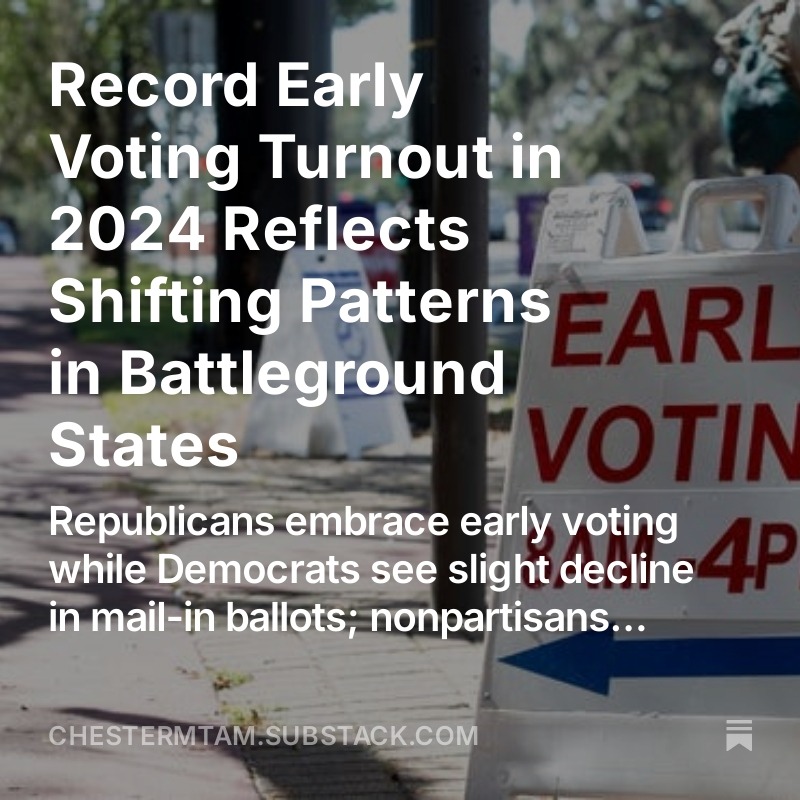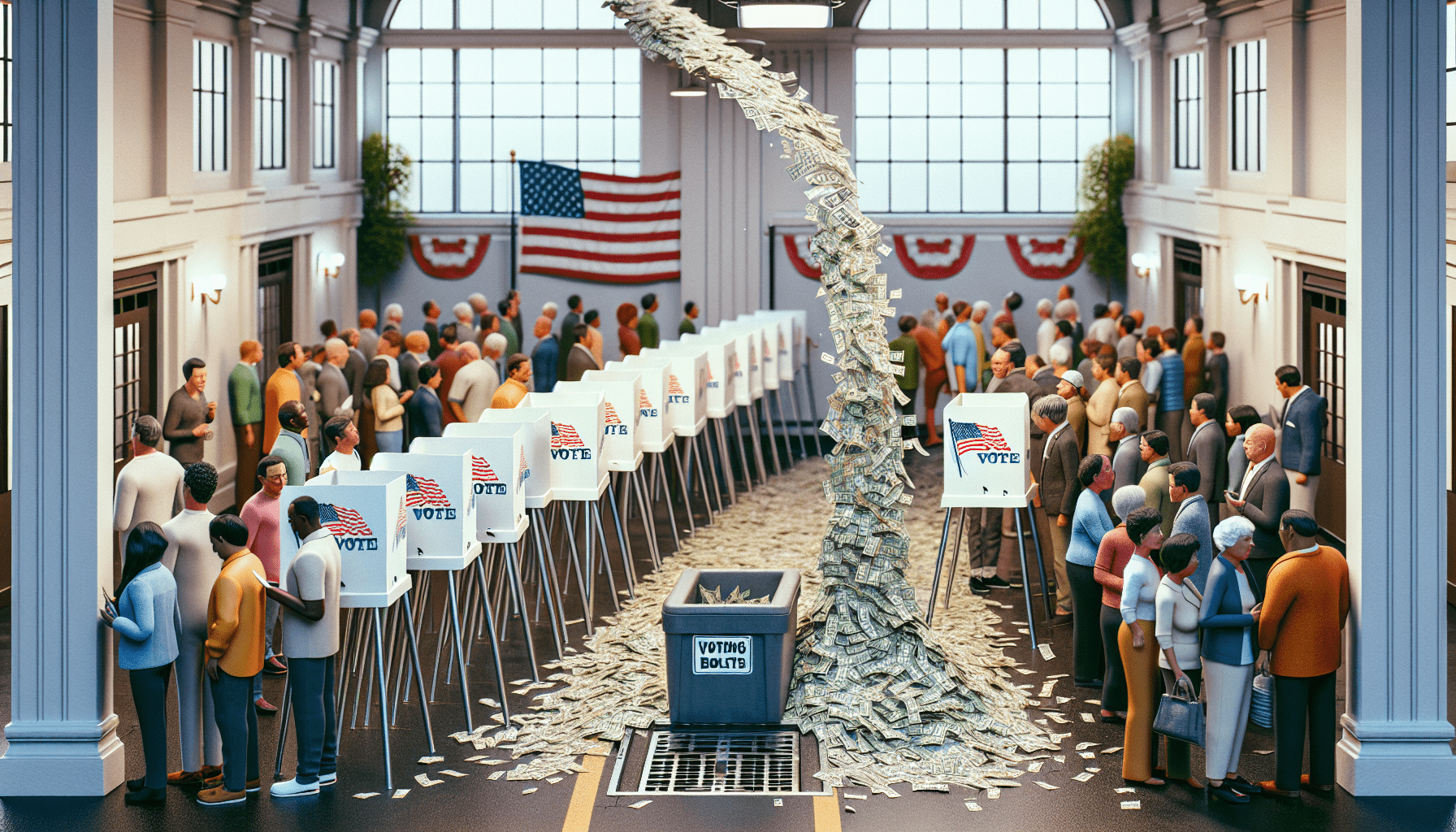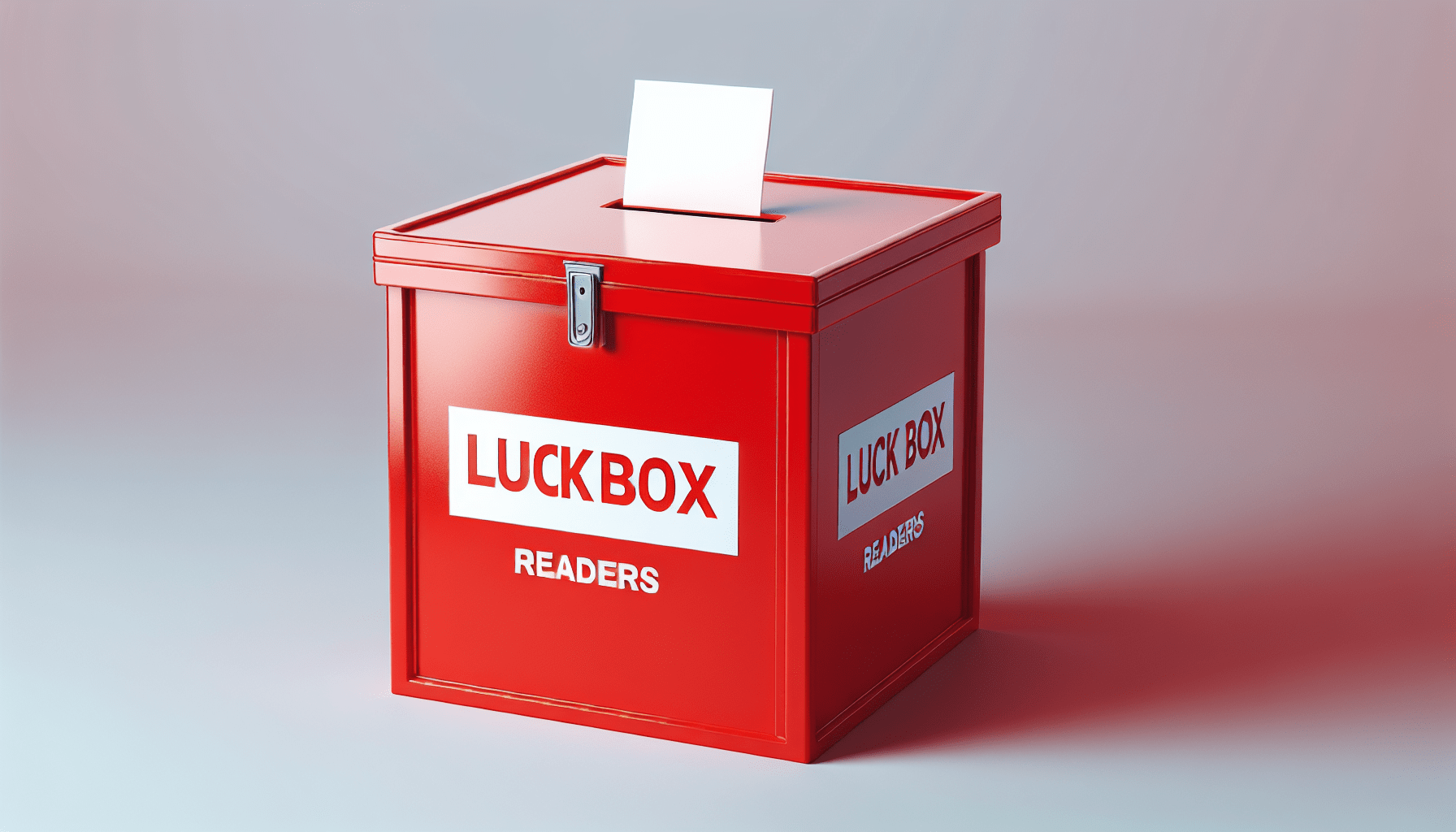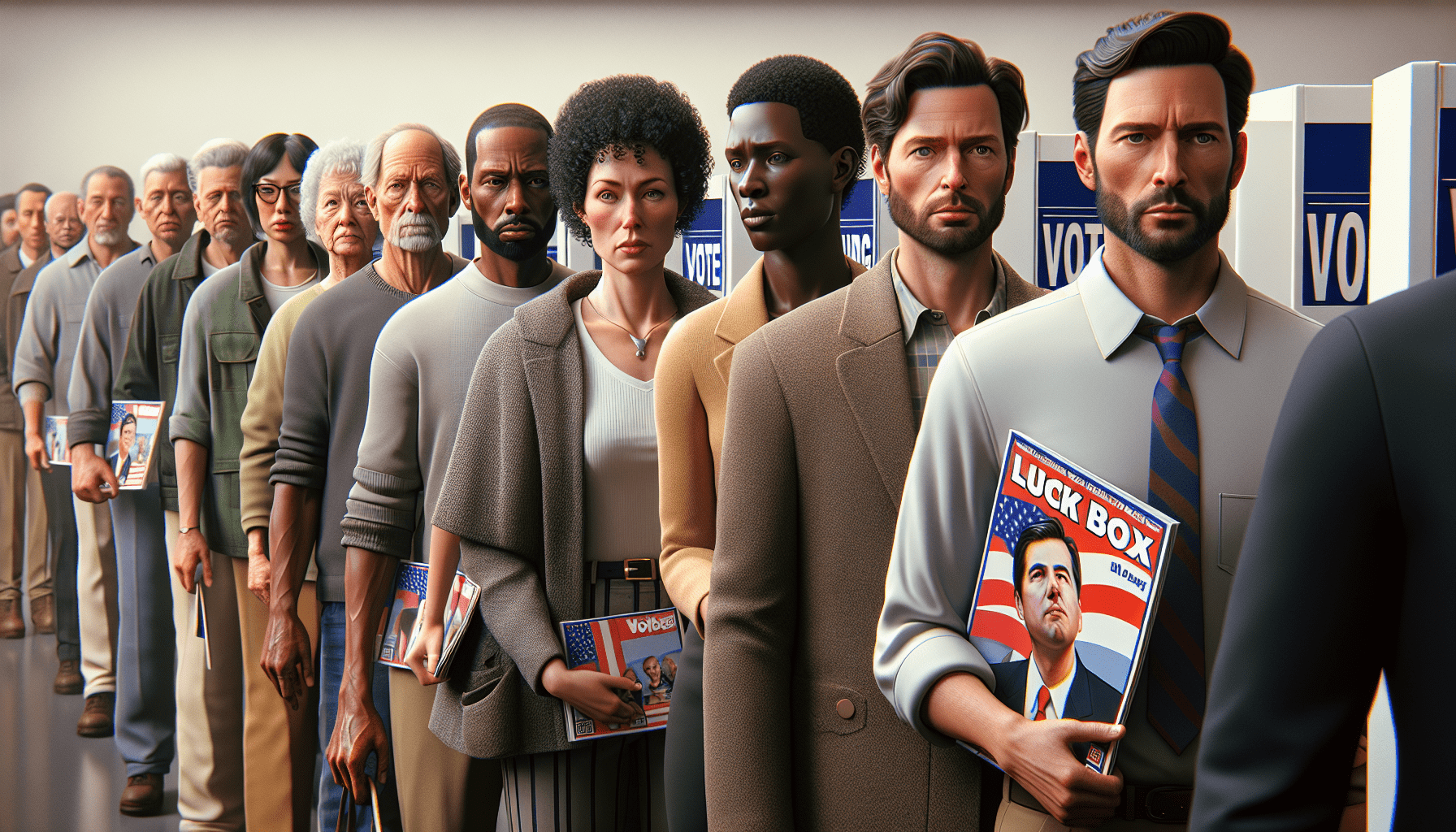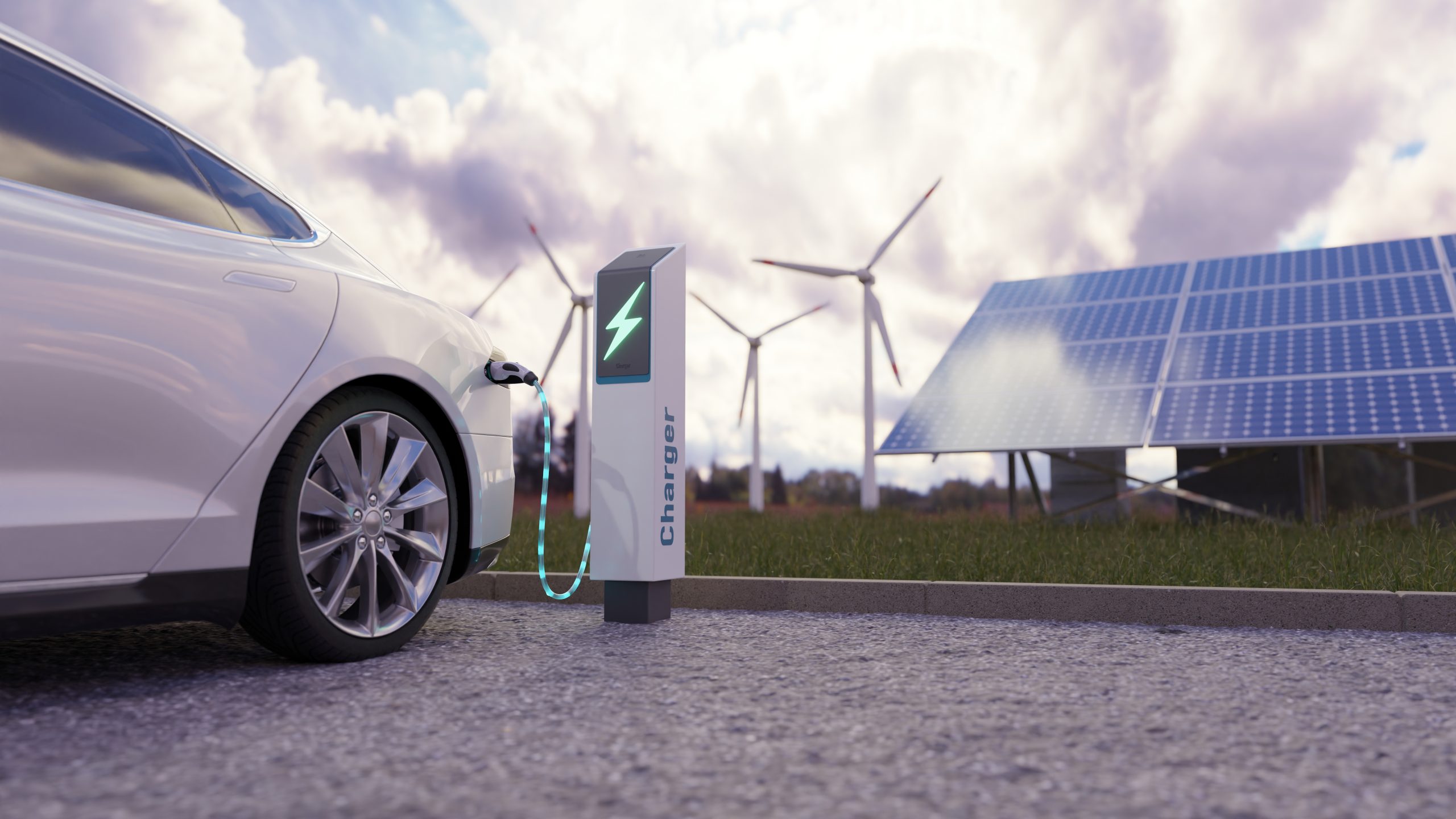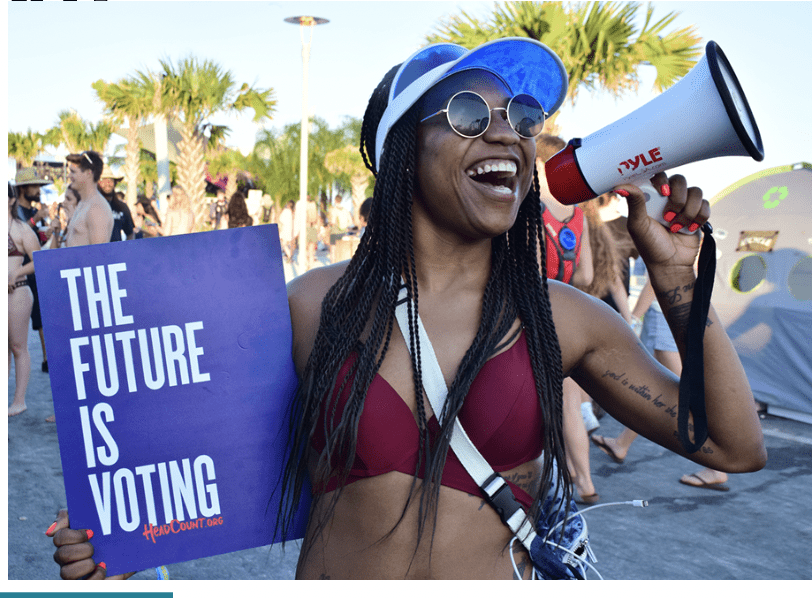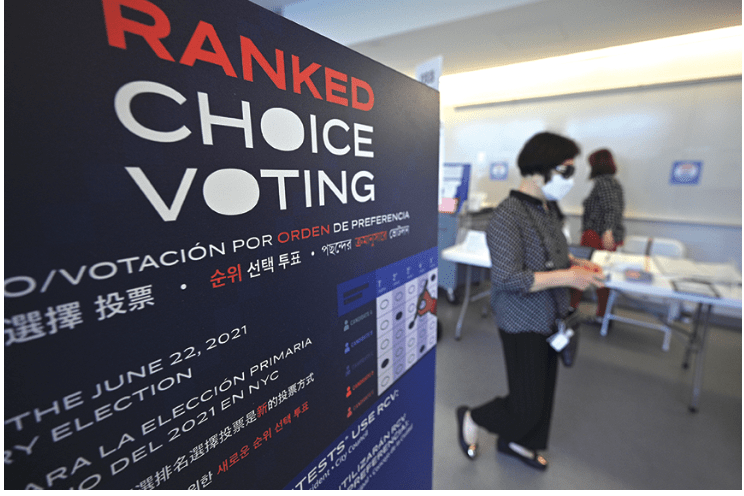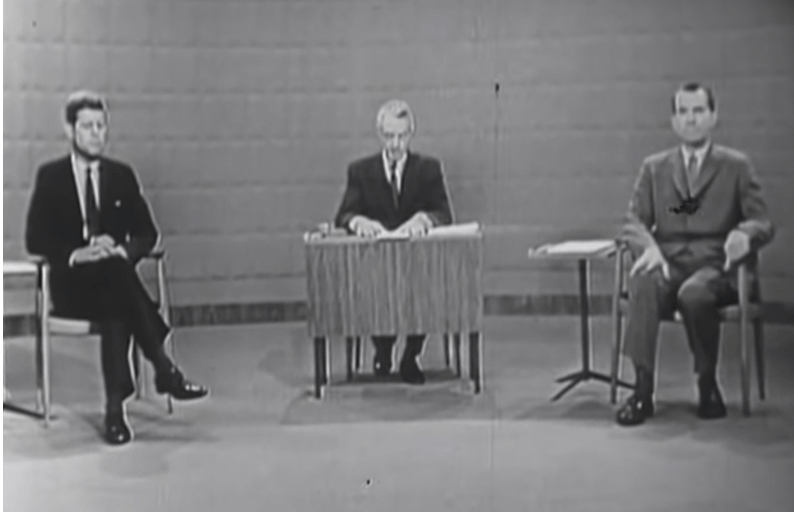Predicting the Unpredictable: Early Voting, Swing States and the Road to 270
With early voting trends pointing to fresh records, the result of the 2024 presidential election will likely be once again decided by a handful of key swing states.
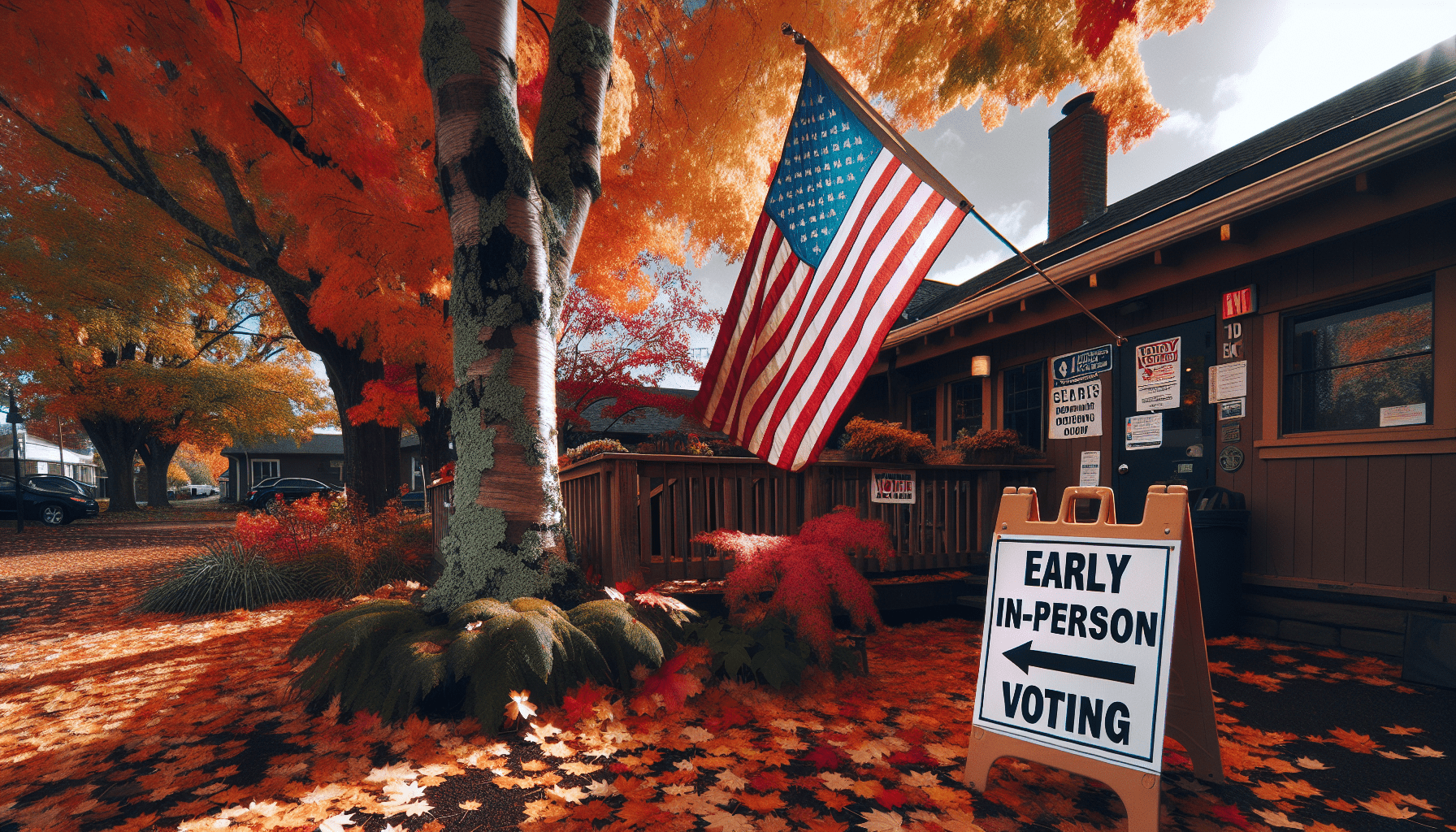
- Just days from the election, polling still indicates a photo finish between Harris and Trump, with seven swing states and three “blue wall” states critical to the outcome.
- With 52 million ballots already cast through early and absentee voting, record-breaking turnout signals a highly engaged electorate and suggests a second consecutive election with historically high participation.
- Victory could hinge on razor-thin margins and contentious recounts.
Five days before the high-stakes 2024 presidential election, the race for the White House seems as uncertain as ever. Polling shows a contest too close to call, while betting markets favor former President Donald Trump to win. But seasoned bettors know favorites don’t always cross the finish line first, and a late-breaking development could add to the suspense.
For millions of Americans, however, their decision is already locked in. Whether or not a game-changing revelation emerges, tens of millions have cast their votes early. In North Carolina alone, over a third of registered voters have already had their say.
In 2024, Pennsylvania, Michigan and Wisconsin hold crucial importance. These states form the backbone of the so-called “blue wall”—a bloc that reliably supported Democratic presidential candidates from 1992 until Trump’s unexpected victory in 2016, when he swept all three on his way to the presidency.
In 2020, Biden reclaimed each of these states, securing his own route to the White House. Their direction in 2024 could once again determine the election’s outcome. With these critical states in mind, we’ll delve into the early voting trends. But first, a look back at voter turnout—a cornerstone of American democracy, which surged to a 120-year high in 2020.
Understanding voter turnout
The percentage of eligible citizens who participate in an election—voter turnout—is one of the clearest indicators of public engagement in the democratic process. High turnout often signals a robust democracy, suggesting a broad segment of the population feels empowered to make their voices heard. A lower turnout can suggest barriers to access or a lack of faith in the system.
In the early years of the United States, the right to vote was highly restricted. In the 18th and early 19th centuries, only white, land-owning men were permitted to vote—a narrow slice of the population. With the majority excluded, turnout was low. Yet over time, amendments and laws broadened access to the ballot.
- 15th Amendment (1870): Enacted after the Civil War, the 15th Amendment prohibited racial discrimination in voting, officially granting minority men the right to vote. However, discriminatory practices like literacy tests, poll taxes and intimidation tactics severely restricted turnout among minorities, especially in the South, for many decades.
- 19th Amendment (1920): Marking a milestone, the 19th Amendment granted women the right to vote. This historic expansion of the electorate gradually increased turnout among women, though it took time for their voting rates to match those of men.
- Voting Rights Act (1965): A landmark in civil rights legislation, the Voting Rights Act banned discriminatory practices, such as literacy tests, greatly expanding access to the ballot box for minorities and other excluded groups, which significantly boosting voter turnout.
- 26th Amendment (1971): By lowering the voting age from 21 to 18, the 26th Amendment extended the right to vote to millions, broadening democratic participation. However, voter turnout among this age group has consistently been lower than that of older demographics.
The 2020 U.S. presidential election saw voter turnout reach roughly 66% (158 million/240 million = 0.658, or 66%), one of the highest levels in more than a century. Several factors contributed to the surge: Expanded access to mail-in and early voting because of the pandemic, intense political engagement and high-stakes issues driving millions to the polls. This compares with a 56% turnout rate in the 2016 election, underscoring how shifts in accessibility, public interest and political climate can drastically influence turnout from one election to the next.
Early voting options in the U.S.
With a historical view of turnout in mind, we can turn to the topic of early voting. Ahead of an election, American voters have several options to cast their ballots, though the specific methods and rules vary from state to state. Traditionally, voters unable to visit the polls in person have relied on absentee ballots, which are completed and returned via U.S. mail. This method saw a significant increase during the COVID-19 pandemic as more voters opted to vote remotely for health and safety reasons.
In recent years, some states have adopted universal vote-by-mail systems, where every registered voter automatically receives a ballot by mail. Voters in these states can still choose to cast their ballot in person if they prefer, but many take advantage of the convenience of mail-in voting—unless, of course, they need a replacement for a lost or damaged ballot.
Additionally, many states now offer in-person early voting, designating specific locations such as county election offices, community centers and other polling sites where voters can cast ballots ahead of Election Day. These options generally open several weeks before the official election date, giving voters flexibility to avoid crowds and long lines.
Take North Carolina as an example, where over a third of registered voters have already cast their votes for the 2024 election. Of the 3.1 million ballots already submitted, an impressive 95% were cast in person at early voting locations, with the remaining 5% submitted as absentee ballots. Nationwide, early voting totals have already climbed above 52 million (both absentee and in-person combined). For context, there were about 101 million early votes in 2020.

Swing states and early voting
Seven swing states will play an outsized role in the upcoming election, but three are particularly pivotal. The battlegrounds—Arizona, Georgia, Michigan, Nevada, North Carolina, Pennsylvania and Wisconsin—include the “blue wall” states of Michigan, Pennsylvania and Wisconsin. Historically, this “blue wall” of 19 states and Washington, D.C., consistently voted Democratic in every presidential election from 1992 through 2012. Donald Trump’s 2016 victory disrupted that streak when he clinched these three states, a critical factor in his election win.
In 2020, President Joe Biden rebuilt the blue wall for Democrats, capturing Michigan, Pennsylvania and Wisconsin and ultimately winning the election. As the 2024 race nears, Harris holds 226 “safe” electoral votes and Trump has 219. With Michigan (15), Pennsylvania (19) and Wisconsin (10) collectively representing 44 electoral votes, these states could be decisive. If Harris can win all three, she would secure the necessary 270 electoral votes (226 + 44 = 270) to clinch the presidency. This scenario would also include a single electoral vote from Nebraska’s second Congressional District.
As this data demonstrates, Pennsylvania’s 19 electoral votes are essential but probably more important for Harris. And early returns from the Keystone State show Democrats holding a possible advantage: roughly 2.1 million mail-in ballots were requested (about 24% of all registered voters), with 57% requested by Democrats, 32% by Republicans, and 11% by “other.” Moreover, Democrats account for 58% of early ballots cast, while Republicans represent 31%, and “other” stands at 10%. This early engagement suggests stronger momentum among Democratic voters in Pennsylvania.
In Michigan, the data suggests Republicans may be especially energized in 2024. Democrats requested 49% of absentee ballots, yet they account for only 47% of the ballots cast (including in-person voting) so far. Republicans, who requested 39% of absentee ballots, currently represent 42% of the total early votes cast—an indication of Republican enthusiasm in this state.
Wisconsin’s early voting data doesn’t reveal a strong trend. Democrats requested 35% of absentee ballots and make up 35% of the ballots cast thus far. Republicans requested 24% and represent 23% of early votes. A substantial 41% of the state’s independent-leaning electorate aligns with “other.”
While Pennsylvania’s early returns may signal a positive trend for Harris, Michigan and Wisconsin appear more evenly split, reflecting a highly competitive landscape. These initial results suggest that while Harris could solidify her lead with strong support in Pennsylvania, Trump may be well-positioned to regain ground in other blue wall states.
Parting thoughts
With just days until the election, respected polls confirm the race between Harris and former President Donald Trump is in a dead heat.

The uncertainty of the outcome has left even seasoned analysts divided. Nate Silver, a renowned election forecaster, expressed his hesitancy in an op-ed for The New York Times: “My gut says Donald Trump. And my guess is that it is true for many anxious Democrats. But I don’t think you should put any value whatsoever on anyone’s gut—including mine.”
Political historian Alan Lichtman stands firm in his recent prediction that Harris will emerge victorious. Known for his “13 keys” system developed alongside Russian seismologist Vladimir Keilis-Borok, Lichtman’s approach centers on historical factors instead of campaign tactics. His model weighs elements like incumbent party stability, economic conditions and social unrest. According to Lichtman, eight keys support the incumbent party, while five support the challenger—a setup he believes favors Harris.
Regardless of expert predictions, what’s clear is this election will likely be as tense and closely contested as any in recent memory. Early voting data and the predictions of trusted political minds both point to a nail-biting finish as painful as the virtual tie in 2000.
Andrew Prochnow has more than 15 years of experience trading the global financial markets, including 10 years as a professional options trader. He is a frequent contributor to Luckbox Magazine.
For live daily programming, market news and commentary, visit tastylive or the YouTube channels tastylive (for options traders), and tastyliveTrending for stocks, futures, forex & macro.
Trade with a better broker, open a tastytrade account today. tastylive, Inc. and tastytrade, Inc. are separate but affiliated companies.
